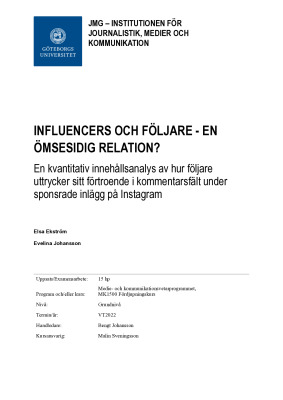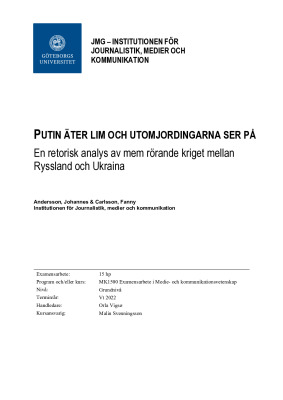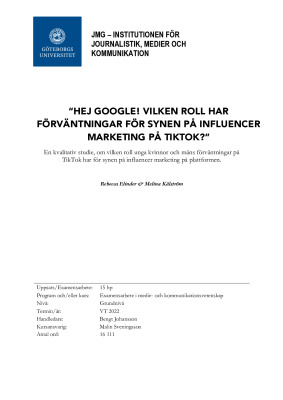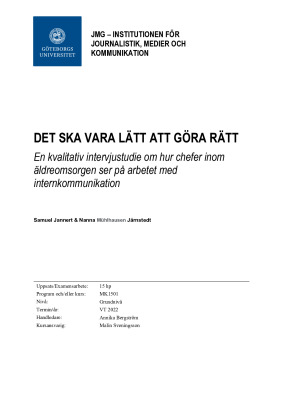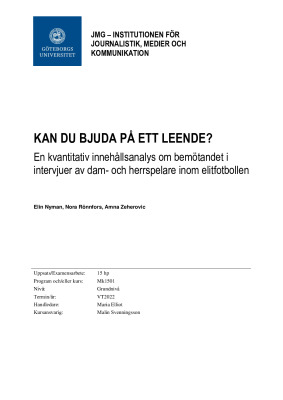Executive summary
This study examines how young women experience social media usage today compared to five years ago, before the #metoo-movement, with increased focus on experience related to digital activism, solidarity and political engagement. Empirical data was collected through semi-structured interviews with eight women who were strategically chosen based on prior
knowledge regarding their social media usage, their prior knowledge of the
#metoo-movement and appropriate age for our purposes. All interviews were conducted in Gothenburg, except for one which was conducted remotely through video call.
The research questions were the following: How do young women experience their consumption, sharing and posting of content on social media? and Do they experience that their usage today differs from before #metoo, and if so, how? Responses from the interviewees were categorized into recurring themes which were then analyzed through and compared to theoretical framework and previous research related to the subject.
Our results show that the interviewed women experience their consumption, sharing and
posting of content on social media somewhat differently. However, all of the women
commonly found activist content as a major part of their consumption experience, and they all
acknowledge its uses in social media. Regarding content that is posted and shared from other
people, the women often reflect upon what is genuine and what is fake. They acknowledged
that many users tend to distribute many types of content solely to convey an idealistic public
image, referring to everyday content as well as activism. Regarding how the women
experience that they are affected by content, they found it hard to describe. However they all
reflect on the content that they consume in varying degrees of activity. The women found it
hard to differentiate between sharing and posting. A possible cause of this, we argue, is that
all women explained a need to be informed and ready to take a stand for the cause while
performing both activities, which through action relates them to each other. However, the
women explained that they found it more comfortable to share another user’s content, rather
than owning up to and sharing their opinions through posting their own content. This is
mainly because of the need to be informed around the content, and the risk of being
questioned or antagonized.
All women shared the opinion that the discourse on social media has changed compared to before #metoo. Some explained that the reception of content has generally become less forgiving, with a larger emphasis on the need to be informed before distributing content and a greater likelihood of opinions being confronted. The women also explained that they have
become more aware of the social rules of social media, and show deeper consideration before sharing or posting content in general. However, some women also expressed that they have become braver and allow themselves to post more personal content now than before. None of the women believed that the #metoo-movement is the sole reason for their contemporary social media user experience. However we suggest that the #metoo-movement could possibly have influenced how women relate to activism-related content in social media today, but we do not exclude the possibility of the contemporary user experience being a result of other
factors. We have only studied Swedish women in a Swedish context. A similar study, conducted in another country could have presented different results. From our findings, further research seeking actual correlations through larger test populations is needed to specify what aspects of #metoo that may have affected the contemporary social media experience.




